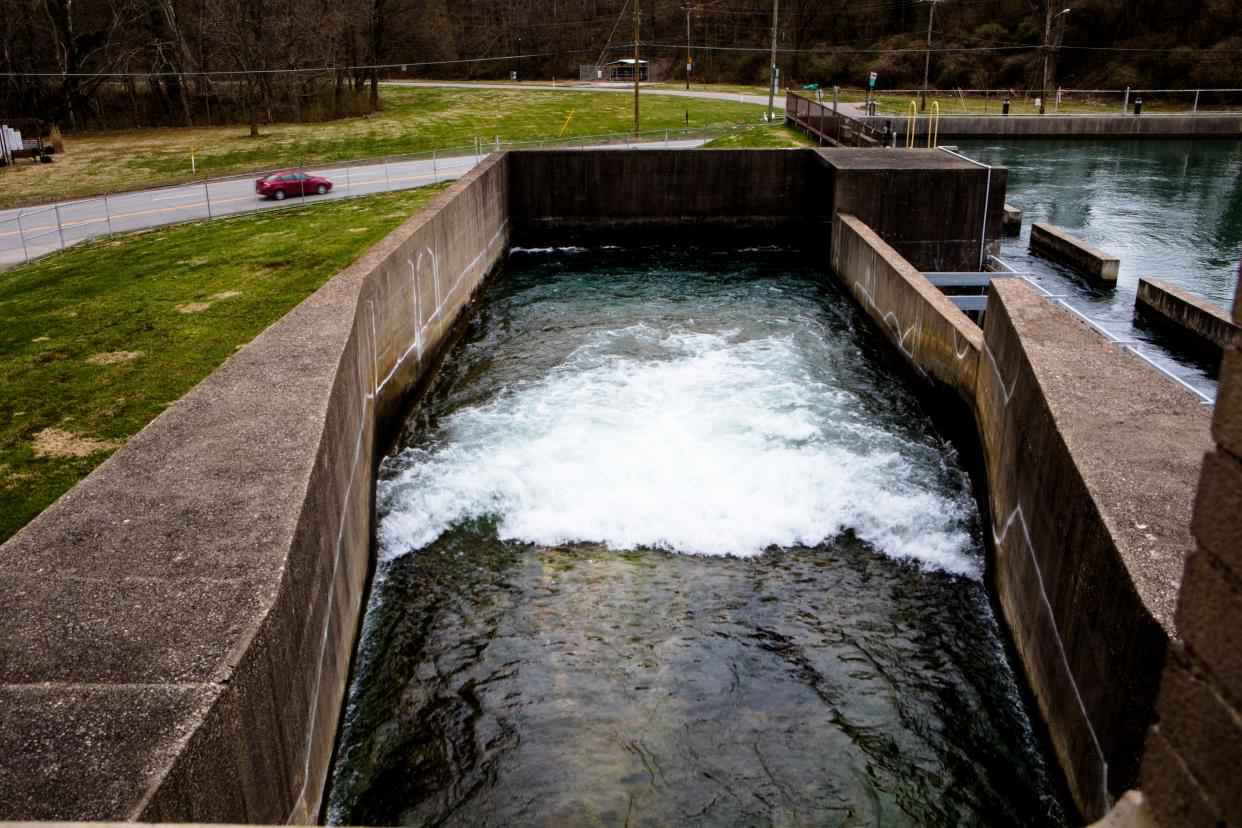New 'forever chemicals' rule might cost Cincinnati water customers $100 million
Greater Cincinnati Water Works customers might pay as much as $100 million to comply with new federal rules requiring the removal of “forever chemicals” from their drinking water.
The estimate from Water Works comes one week after the U.S. Environmental Protection Agency announced it would begin enforcing tougher limits on the industrial pollutants within the next five years.
Activists and environmentalists hailed the EPA's decision as a crucial step toward making drinking water safer and reducing health risks, such as cancer and other ailments, for millions of Americans.
Some local governments and water utilities, however, warned the cost to water ratepayers could run into the billions of dollars nationwide as they bring treatment plants up to the new standards.
The chemicals, also known as per- and polyfluoroalkyl substances, or PFAS, show up in trace amounts in water systems across the country, including some in Greater Cincinnati. They’re sometimes called forever chemicals because they break down slowly and can remain in the body for years.

PFAS get into the water when industries release them during the manufacturing of products such as nonstick pans, waterproof fabrics, clothing, carpets and other common household products.
In a memo to Cincinnati City Council, City Manager Sheryl Long said one of the two water treatment plants operated by Greater Cincinnati Water Works would require an estimated $100 million in upgrades.
Ratepayers are the most likely source of new revenue for Water Works, but federal grants and settlement money from lawsuits against companies that use PFAS chemicals could offset some of the cost.
“GCWW is continuing to evaluate options to determine the best and most cost-effective way to comply with the regulation,” Long wrote.
One of two plants doesn't comply with rule
The plant in question is the Charles M. Bolton Plant in the northwest corner of Hamilton County, which serves about 200,000 customers in Colerain and Springfield townships. The plant draws water from the Ohio River and the Great Miami Valley Aquifer.
Two PFAS chemicals have been found there at levels above the new EPA regulations of 4 parts per trillion. One chemical has been as high as 6.1 parts per trillion and the other at 4.7 parts per trillion.
Water Works’ other plant, the Richard Miller Treatment Plant on the city’s East Side, also draws water from the Ohio River, but it uses a state-of-the-art filtration system to remove harmful substances, including PFAS chemicals. That plant is far larger than the Bolton plant and serves about 1 million customers.
According to Long’s memo, the Miller plant already complies with the new EPA standards.
An Enquirer analysis of EPA data last year found water districts that serve Indian Hill, Terrace Park, Loveland and parts of Northern Kentucky also could run afoul of EPA rules. Some drinking water samples in those districts measured three to four times the new limits.
Local officials have said the drinking water here is safe and has for years met federal health and safety standards. The greatest risk from PFAS comes from long-term exposure, which has been linked to numerous health problems.
But scientists and environmentalists say a growing body of research suggests the chemicals are a threat to humans even at levels that have been permitted for decades.
“This action will prevent thousands of deaths and reduce tens of thousands of serious illnesses,” said EPA Administrator Michael Regan when he announced the regulations last week.
Research shows links to health problems
A recent study at the University of Cincinnati linked exposure to PFAS chemicals to the delayed onset of puberty in girls, which increased the risk of some cancers and other health problems later in life.
“As we continue to do research, we find there are health effects at lower and lower levels,” said Susan Pinney, the UC researcher who led the study.
The movie “Dark Waters,” based on the work of Cincinnati lawyer Rob Bilott, tells how PFAS contamination in the water became connected to serious illnesses over several decades, leading to lawsuits against manufacturers and a $13.7 billion settlement with public water systems.
That settlement, along with billions of dollars from the 2021 bipartisan infrastructure law, should help communities pay for treatment plant improvements. But those sources are unlikely to cover the full cost, which leaves ratepayers and local governments to pick up the rest.
If those costs run too high, some smaller water districts may consider closing their plants and buying water wholesale from larger suppliers, such as Cincinnati.
Greater Cincinnati Water Works officials said they will continue to study their options. They have until 2029 to come up with a plan.
This article originally appeared on Cincinnati Enquirer: Forever chemicals: Removing PFAS in Cincinnati might cost $100 million
